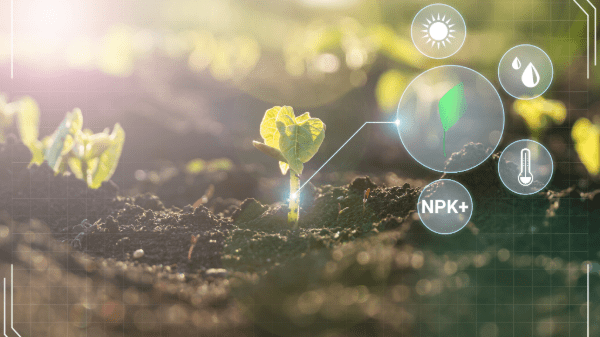The way produce is grown, stored, shipped, and sold has already been changed by artificial intelligence technology, according to Keith Wilson, managing member at King Fresh Produce, LLC, BB #:147197 a grower-shipper in Dinuba, CA.
“The supermarket chains are really quite technologically savvy, and they’re pretty much dictating that shippers they do business with stay alongside them,” he points out, mentioning computer-generated point-of-sale materials in stores and upgraded accounting systems.
At the same time, AI facilitates inventory tasks, Wilson says. “It definitely helps with inventory by knowing where each pallet is in our cold storage.”
Marketing applications
Mackenzie McLeod, executive director of brand management with Dallas, TX-based marketing consultant DMA Solutions, Inc., BB #:188910 says AI makes produce marketing a “smarter” process.
“For example, AI technology has contributed to the predictive analytics functions utilized by social media platforms in their advertising algorithms,” McLeod says. “Marketers can get precise and targeted with their ad dollars and reach the people who have certain key behaviors or shopping habits that align with the product being promoted.
“The explosion of marketing technology solutions has led to a need to invest more time and money in marketing technology to grow brands effectively,” she adds.
“On one hand, the automated nature of this tech saves us time, and marketers can use predictive analytics to spend money more effectively. But on the other hand, the tools themselves come at a price and require a certain level of expertise to use.”
Brianna Shales, marketing director at Wenatchee, WA-based grower-shipper Stemilt Growers, LLC, BB #:113654 agrees that AI has streamlined processes.
“At Stemilt, we’re finding that AI is helping us gain efficiencies with basic tasks in many job areas. Some examples would be streamlining document and report creation based on asking questions in ChatGPT.”
ChatGPT also helps in composing emails, letters, and other documents. “It doesn’t replace the need for humans to edit and review the work, but it does help with a good starting point to save time and energy,” she explains.
Shales says AI also plays a role in Stemilt’s packaging and graphic design process, adding the company’s website has a chatbot “that learns and improves its communication to common questions over time.”
Precision in the fields
Stemilt’s data and analytics team is utilizing AI as part of its data-mining process “to help us make business decisions based on facts. We predict that AI will be used in the future to estimate crops, once the technology can get to a point where it does this more efficiently and as effectively as humans,” she says.
“We also expect AI to continue coming into packing technology to help size and sort fruit in a more enhanced way than it’s done today. There are many upsides to the efficiencies gained through AI,” she adds, “especially in agriculture, where there’s so much that goes into producing goods.”
Vancouver, BC-based grower-shipper The Oppenheimer Group (Oppy) BB #:116424 delved into an AI technology venture in 2021 by investing in Bloomfield Robotics.
Trials of automated yield forecasting in California grape vineyards had “promising results,” according to Garland Perkins, Oppy’s senior manager of innovation and sustainability.
Bloomfield Robotics developed a vehicle-attached camera that captures detailed data processed through “deep learning” AI to forecast and manage yields at the cluster level, Perkins notes, which can enhance plant performance and health.
“Oppy plans to extend this technology to other crop categories in the future,” Perkins shares, “showcasing dedication to digitalizing crops and supporting Bloomfield Robotics’ innovative efforts.”
Of course, AI advances of all types must go through proving-ground paces.
“Our industry is gradually embracing AI for yield prediction and ag-tech-related tasks in the supply chain,” agrees Perkins.
“While there are potential benefits, we’re still in the R&D phase, and the road to commercialization can be complex. Although AI shows promise, we need to be very specific in problem-solving and measurement to ensure practical implementation.”
All in all, however, the potential gains are too compelling not to try, Perkins adds. “Despite the challenges, the potential to revolutionize the agriculture sector and address labor shortages through AI and robotics is exciting.”
This is an excerpt from the Applied Technology feature in the November/December 2023 issue of Produce Blueprints Magazine. Click here to read the whole issue.



